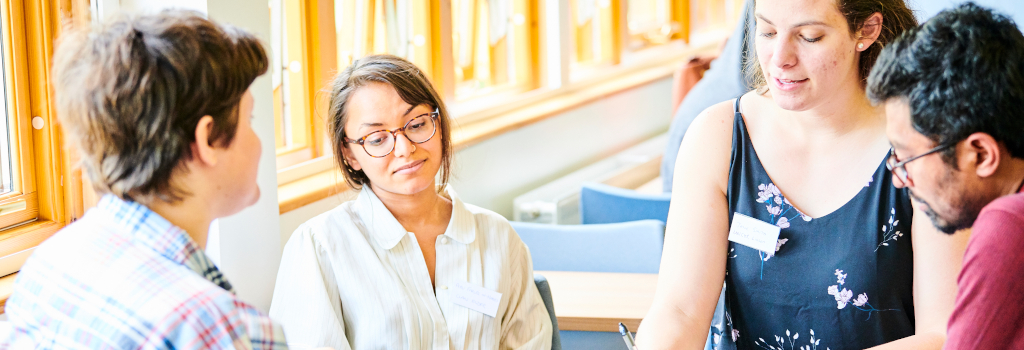Collaborative Learning

Collaborative learning is where two or more people work together to achieve desired learning outcomes. This is typically done in small groups of three to six people, but can be done by much larger groups depending upon the topic. Group members may work at different geographical locations and may never physically meet, but this will not affect outcomes if carried out efficiently.
There are a number of benefits to working collaboratively.
- Knowledge and skills become a shared resource. Group members may be appointed to carry out specific tasks based on their skills, or may share these skills with other group members, hence new skills may be learned.
- Work can be divided up so that more tasks and goals can be achieved in a shorter time than individual or small group collaborative learning.
- Larger problems can be tackled than could be considered by individuals or smaller groups.
- Collaborative working can improve psychological wellbeing and sense of belonging.
- Collaborative work can develop a healthy competitiveness amongst group members as well as between different groups.
- Collaborative working develops students’ social skills, such as teamwork, as well as academic skills like critical thinking.
Best Practice Tips
Examples of collaborative work with large groups:
- Asking small groups to peer teach the rest of the group, typically in the form of short presentations to teach a single aspect of the learning.
- Rotate small groups within the larger group, e.g. pair work, four-person group work, feeding back to larger groups, feeding back to the whole class. Groups can be rearranged to allow learners to work with a large number of their peers.
- Team-led cooperatives, developing and promoting a new product or service as part of an enterprise activity.
To ensure effective collaborative work:
- Establish clear goals at the beginning of the project so each participant knows what the outcomes should be. Using real world problems for project work ensures interest and understanding of how the project fits with learning goals.
- Establish ground rules for group working considering that the larger the group the more diverse the membership will be in regard to ethnicity, gender, previous experience of group work etc.
- Provide scaffolding with new groups who are not used to working collaboratively so they are guided through the process.
- Ensure there is sufficient access to, and knowledge of how to use, collaborative technologies such as shared storage, video-conferencing applications, etc.
- Consider carefully how assessment will be conducted and how effective learning will be for all members, especially if roles have been given to individuals.
Avoiding common problems:
- Some groups may have difficulty in getting started. Make sure that the goals are clear, and you have encouraged (or required) students to allocating tasks and roles early on.
- Some groups may have difficulty in communicating. With students who may have work or home commitments, or even in different timezones, meetings need to be very carefully scheduled. Lack of technical skills may also affect communication, so ensure that students are clear on how to use the available technologies. Personality conflicts in the group can also make communication difficult. Make sure that students know what to do if their group comes to an impasse.
- Some students may not carry out their allotted tasks and therefore will be carried by the rest of the group. Ensure that the group monitor this and know what to do to deal with it at an early stage.
- Some groups may seem to have difficulty focussing on the project. If learners have rigorous modules/assessment timetables, then it may be difficult to continue contributing to a collaborative project at assessment hand-in dates. When developing a group assessment, make sure it doesn’t clash with other summatives on the programme, and make the most of the ongoing nature of group projects to spread out summative deadlines.
Further Reading
Barkley, E.F., Major, C.H. and Cross, K.P. Collaborative learning techniques. Second edition. San Francisco, California: Jossey-Bass; 2014.
